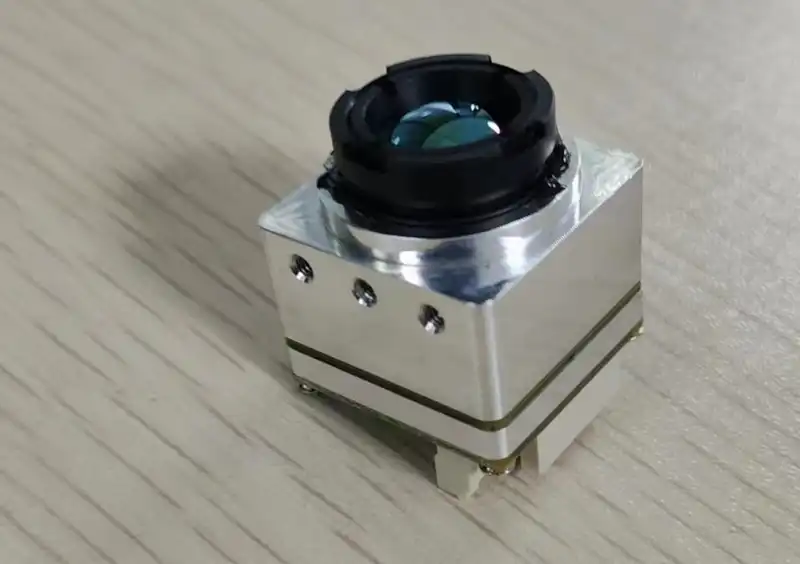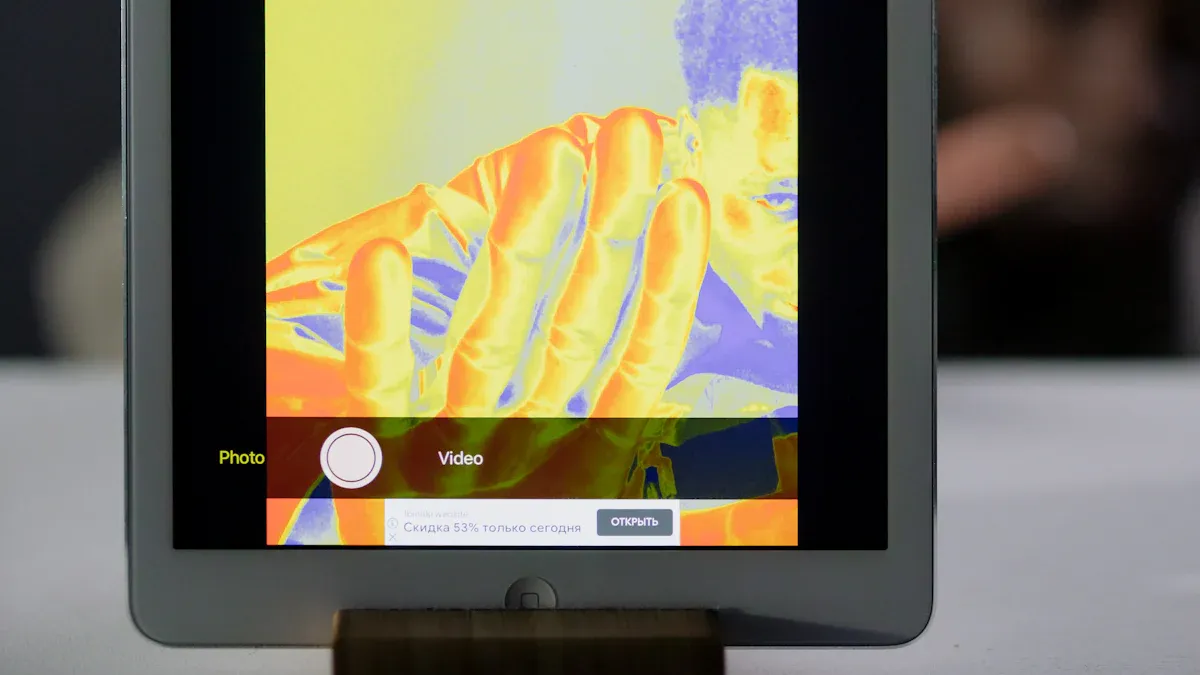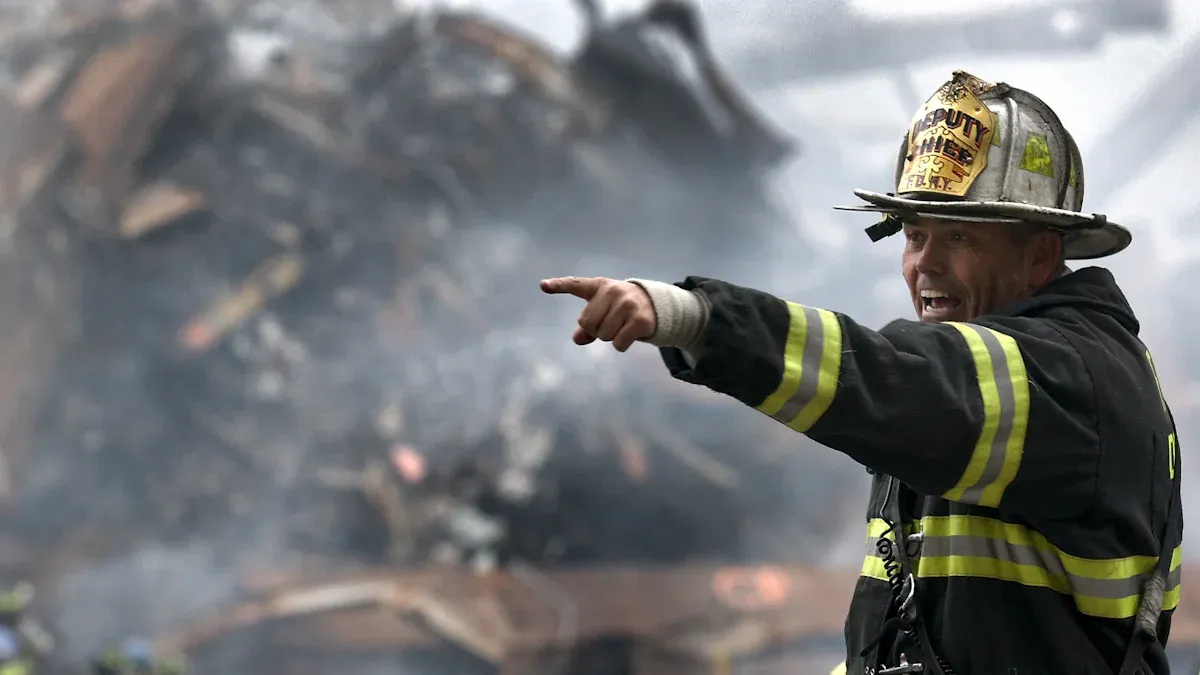
Thermal imaging has revolutionized rescue missions, significantly improving the ability to locate individuals in need. The U01-10 Thermal Imaging Camera, equipped with a Vanadium Oxide non-cooling Infrared Focal Plane Detector, excels at detecting heat signatures. This advanced technology ensures clearer and more precise imaging, even in challenging conditions.
Rescue data highlights that thermal imaging plays a crucial role in saving lives. For instance, tests conducted in the Gulf of Gdansk demonstrated the ability to detect life rafts carrying five individuals from up to 0.9 nautical miles away. In cold water scenarios, rapid detection is critical for saving time and increasing survival rates. Tools like the U01-10 Thermal Imaging Camera make rescue operations faster, more efficient, and more effective.
Key Takeaways
The U01-10 thermal camera uses special vanadium oxide to find heat. It is very helpful for rescue missions.
This camera can see people from 944 meters away. It makes searching faster during emergencies.
It is light (only 18g), so it is easy to carry. This helps rescuers use it quickly when needed.
Thermal cameras like the U01-10 keep rescuers safe. They let teams check dangerous places without going near them.
New vanadium oxide technology will make cameras even better. They will be more sensitive and accurate for rescue work.
Technology Behind Thermal Imaging Cameras

How Vanadium Oxide Non-Cooling Infrared Focal Plane Detectors Work
Vanadium oxide non-cooling infrared focal plane detectors are key to modern thermal imaging. These detectors use microbolometers to sense heat from objects. Unlike cooled detectors, they work well in high heat without needing cooling systems. This makes them easier to carry and saves energy.
Vanadium oxide (VOx) improves how these detectors perform. VOx has a high resistance to temperature changes, helping it notice small heat differences. It also produces clear images with low noise. The table below explains how these detectors function:
Aspect | Description |
|---|---|
Operation | Works in high heat (up to 100 °C) without cooling. |
Performance | Uses little power, reacts fast, and absorbs heat well. |
Material | VOx has high resistance change (2-3%/K) and low noise for clear images. |
Fabrication | Made using methods like magnetron sputtering for best results. |
Stability | Stays reliable over time, even in tough conditions. |
With this advanced tech, the U01-10 thermal imaging camera gives clear and dependable images in tough situations.
Key Features of the U01-10 Thermal Imaging Camera
The U01-10 thermal imaging camera is special because of its smart design and strong features. It uses a vanadium oxide non-cooling infrared focal plane detector for sharp images. Its resolution is 256×192, and its pixels are only 12μm. This helps it find heat sources even in hard conditions.
Here are some top features of the U01-10:
Great Detection Range: Spots people up to 944 meters and cars up to 1389 meters.
Small and Light: Weighs just 18g, making it easy to carry.
Wide Temperature Range: Works well from -20℃ to +50℃.
Manual Focus Lens: Has a 10.0mm lens for accurate focus.
Fast Frame Rate: Runs at 25Hz for smooth image updates.
These features make the U01-10 perfect for rescue missions where speed and accuracy matter most.
Advantages of Compact and Lightweight Designs
In rescues, every second is important. A small and light thermal camera can save time and boost efficiency. The U01-10 is designed to be portable but still powerful. Weighing under 1kg, it’s easy to carry by hand or in vehicles. Its small size allows quick use, which is vital in emergencies.
The table below shows why compact designs are helpful:
Feature | Description |
|---|---|
Portability | Light and simple to carry during rescues. |
Deployment Speed | Can be ready to use in under 30 seconds. |
Interoperability | Works well with drones, vehicles, and communication tools. |
This design helps rescue teams act fast and efficiently, even under pressure. The U01-10 also works with drones and other tools, making it useful for many tasks.
Benefits of Thermal Imaging Cameras in Search and Rescue

Finding Heat in Hard-to-See Places
Thermal cameras find heat even in tough spots. They work in forests, smoky areas, or at night. Unlike regular tools, they don’t need light to work. This makes them great for places with low visibility.
Tests show handheld thermal cameras improve finding people. Handheld Infrared Thermal (HIRT) cameras detect 11.2 meters farther than Low Infrared Thermal (LIRT). They also beat flashlights by 19.8 meters. This doubles the range, showing how useful they are. Tools like the U01-10 help find heat quickly, saving time in emergencies.
Helping Rescue Teams Work Faster and Safer
Thermal cameras make rescue faster and safer. They scan big areas without entering dangerous places. This saves time and keeps teams away from harm.
Reports show thermal cameras speed up finding people. They let teams search safely in tricky spots. Whether it’s collapsed buildings or wildfire zones, cameras like the U01-10 are reliable tools for safe searches.
Working Well with Drones and Other Gear
Thermal cameras work with drones and rescue tools easily. This makes them very useful in missions. You can attach them to drones to search wide areas fast. They also work with vehicles for ground searches.
Details explain how this works:
Feature | Importance |
|---|---|
Hardware Fit | Shows why matching hardware is needed for smooth use. |
Testing Gear | Explains testing tools together before using them in rescues. |
Working Together | Highlights how tools must connect well in emergencies. |
Real-Life Example | Shares problems teams faced with tools that didn’t match. |
Rescue Needs | Lists key features like strength and power for good performance. |
Thermal drones with cameras like the U01-10 find people in far places. They spot hidden fires and watch fire lines at night. They track movement without needing direct sight. This helps teams handle tough rescue jobs better.
Practical Uses in Search and Rescue
Finding Missing People in Hard-to-Reach Places
Thermal cameras are great for finding missing people in tough areas. They spot heat, making them useful in forests, mountains, or at night. In 2017, a drone with a thermal camera found a missing woman in a thick Canadian forest after other searches failed. Another drone quickly found a lost dog in a rural U.S. area by detecting its heat.
The U01-10 thermal camera is light and works well with drones. It can find human heat from 944 meters away, covering large areas fast. This saves time and improves the chances of finding people in hard places.
Spotting Survivors in Disaster Areas
Disaster zones are messy and dangerous, making rescues hard. Thermal cameras like the U01-10 help by spotting heat through rubble, smoke, or darkness. Drones with these cameras can go where people can’t safely reach. They send live updates, helping find trapped people in tough spots.
Drones with thermal cameras work well in big disaster areas. They find survivors anytime, even in bad conditions. By sharing key details with rescue teams, these tools improve planning and save more lives.
Helping Firefighters in Smoky Areas
Firefighters struggle in smoky places where they can’t see well. Thermal cameras let them see through smoke to find fire hotspots or trapped people. This helps them fight fires and rescue victims better.
Tests show how useful these cameras are. They help firefighters find victims fast and track fires. They also spot hidden fires, like ones behind walls. The U01-10 reacts quickly and is very sensitive, helping in emergencies. These cameras make firefighting safer and more effective.
Advancements in Vanadium Oxide Technology
Better Sensitivity and Accuracy in Thermal Imaging
Vanadium oxide technology has improved how thermal imaging works. It helps rescue teams see heat more clearly and reliably. New ways to make vanadium oxide chips have made them better. These chips can now detect tiny temperature changes in hard-to-see places.
Special designs like W-doped VO2 layers make detectors even stronger. They work well in very hot or cold conditions without losing accuracy. These upgrades give sharper images and quicker responses. This helps rescue teams find people faster during emergencies.
Working with Drones, Aircraft, and Vehicles
Rescue missions need tools that work well together. Cameras like the U01-10 easily connect to drones, planes, and vehicles. You can use drones to search from the air or vehicles to look on the ground. This makes searching large areas faster and easier.
Drones with thermal cameras send live updates during disasters. Planes use these cameras to scan big areas, while vehicles focus on smaller spots. This teamwork makes rescue operations flexible and effective in any situation.
Future Improvements for Rescue Missions
Vanadium oxide technology will keep getting better. Research is making detectors more sensitive and durable. Future cameras will have clearer pictures and faster reactions. These tools will be even more helpful in saving lives.
New ideas might include cameras working with robots or AI systems. These could make rescue missions smarter and quicker. As vanadium oxide improves, it will help teams save lives with more speed and accuracy.
The U01-10 thermal camera uses vanadium oxide detectors to find heat. It helps rescue teams work faster and better. This tool saves lives in tough places like disaster zones or faraway areas. Vanadium oxide technology keeps improving, making cameras more accurate and useful. Future tools will help rescuers solve problems with more ease and confidence.
FAQ
What makes the U01-10 thermal imaging camera special?
The U01-10 is unique because of its vanadium oxide detector. It is small, light, and has high resolution. It finds human heat up to 944 meters away and vehicles up to 1389 meters. Its lightweight design works well with drones, making it great for rescues.
Can the U01-10 handle extreme weather?
Yes! The U01-10 works in temperatures from -20℃ to +50℃. It can also be stored safely between -30℃ and +70℃. Its strong build ensures it works well in very cold or hot places.
How does the U01-10 help in rescues?
The U01-10 finds heat through smoke, darkness, or debris. It has a fast frame rate and clear images to locate people quickly. You can use it with drones or vehicles to search large areas faster.
Is the U01-10 easy to use during emergencies?
Yes! The U01-10 is light (18g) and quick to set up. You can carry it easily or attach it to drones. Its manual focus lens helps you aim accurately, even in stressful situations.
Can the U01-10 work with drones?
Yes, the U01-10 connects easily to drones. This helps you search big areas quickly and reach hard spots. Whether in forests or disaster zones, drones make rescues faster and safer.
💡 Tip: Use the U01-10 with a drone to search faster and better in tough places.
See Also
The Importance of Thermal Imaging Cameras in 2025
Best AI Video Boxes for Vehicles Analyzed in 2025
Best CarPlay HDMI Dongles for 4K Streaming in 2025
